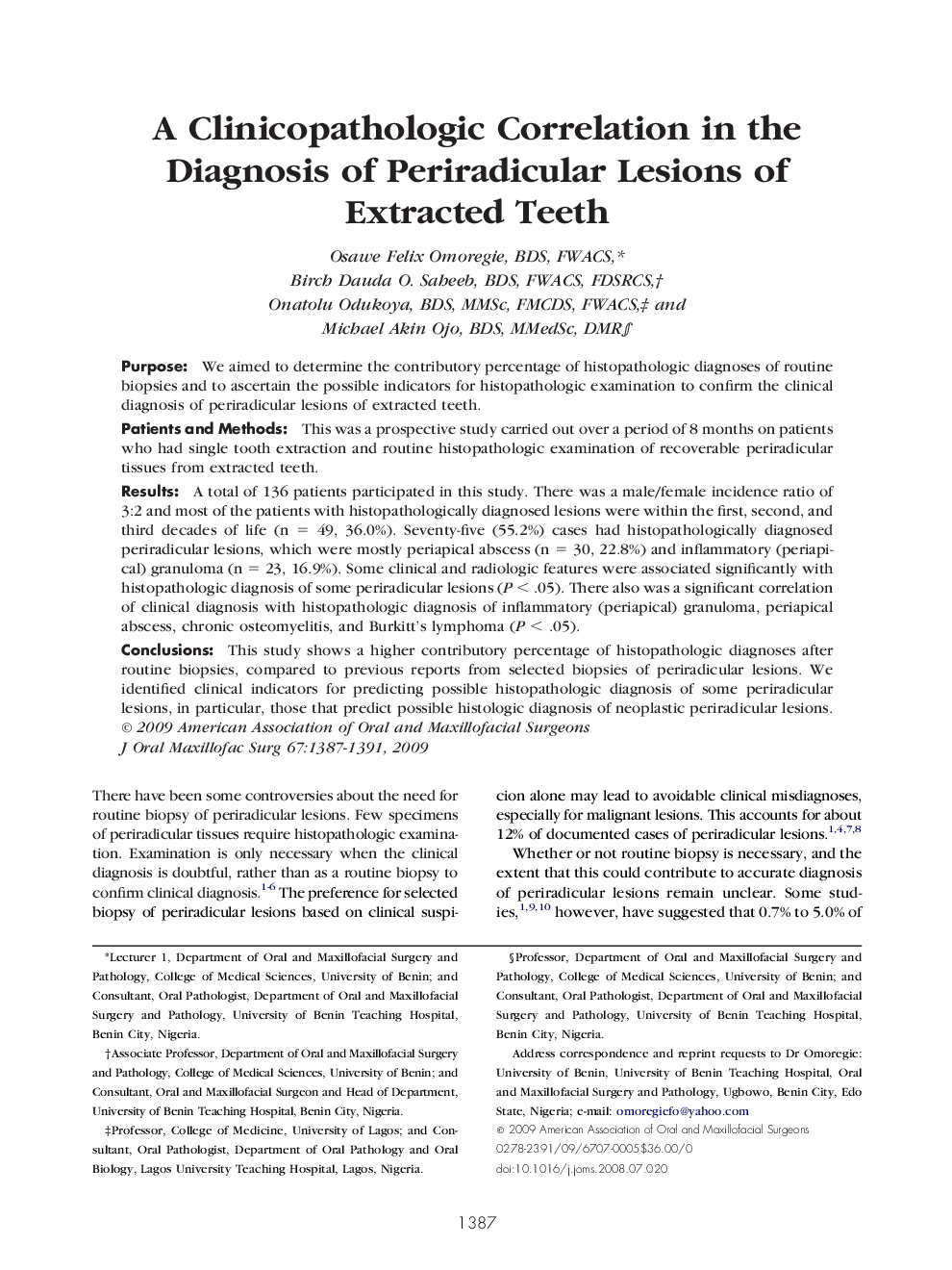| Article ID | Journal | Published Year | Pages | File Type |
|---|---|---|---|---|
| 3158475 | Journal of Oral and Maxillofacial Surgery | 2009 | 5 Pages |
PurposeWe aimed to determine the contributory percentage of histopathologic diagnoses of routine biopsies and to ascertain the possible indicators for histopathologic examination to confirm the clinical diagnosis of periradicular lesions of extracted teeth.Patients and MethodsThis was a prospective study carried out over a period of 8 months on patients who had single tooth extraction and routine histopathologic examination of recoverable periradicular tissues from extracted teeth.ResultsA total of 136 patients participated in this study. There was a male/female incidence ratio of 3:2 and most of the patients with histopathologically diagnosed lesions were within the first, second, and third decades of life (n = 49, 36.0%). Seventy-five (55.2%) cases had histopathologically diagnosed periradicular lesions, which were mostly periapical abscess (n = 30, 22.8%) and inflammatory (periapical) granuloma (n = 23, 16.9%). Some clinical and radiologic features were associated significantly with histopathologic diagnosis of some periradicular lesions (P < .05). There also was a significant correlation of clinical diagnosis with histopathologic diagnosis of inflammatory (periapical) granuloma, periapical abscess, chronic osteomyelitis, and Burkitt's lymphoma (P < .05).ConclusionsThis study shows a higher contributory percentage of histopathologic diagnoses after routine biopsies, compared to previous reports from selected biopsies of periradicular lesions. We identified clinical indicators for predicting possible histopathologic diagnosis of some periradicular lesions, in particular, those that predict possible histologic diagnosis of neoplastic periradicular lesions.
